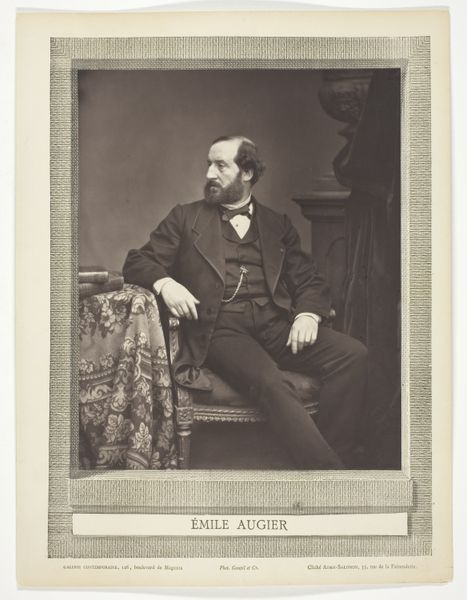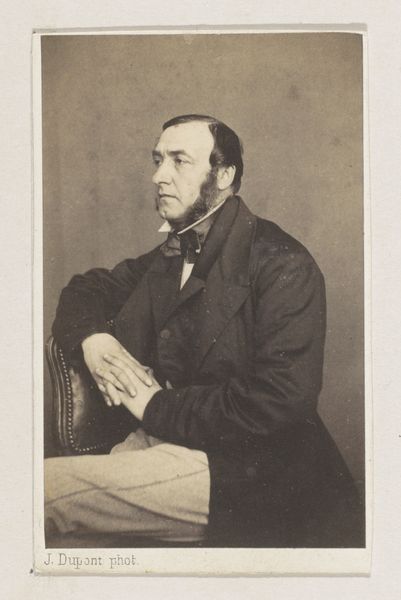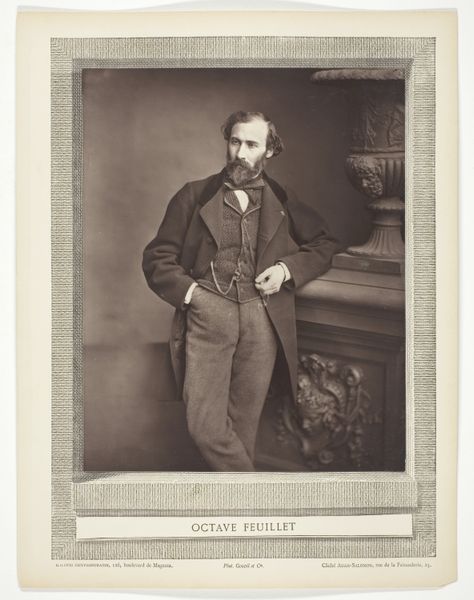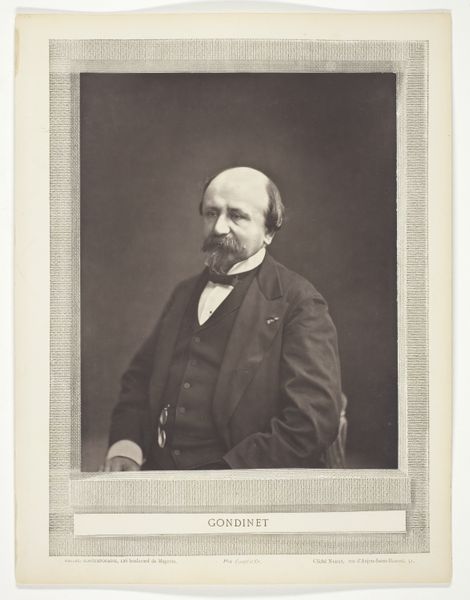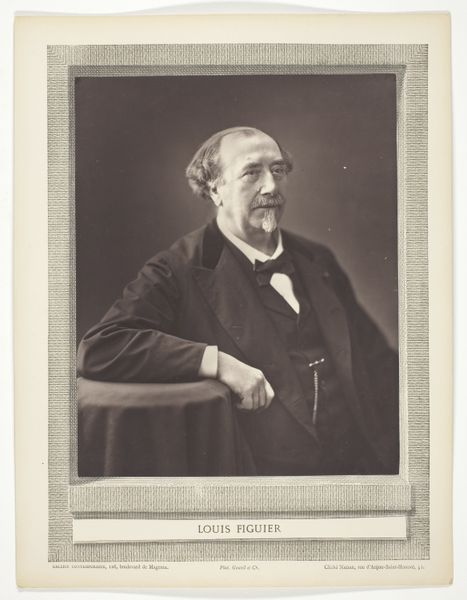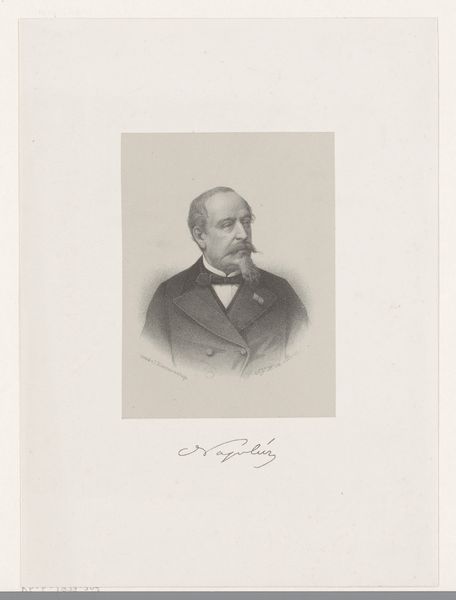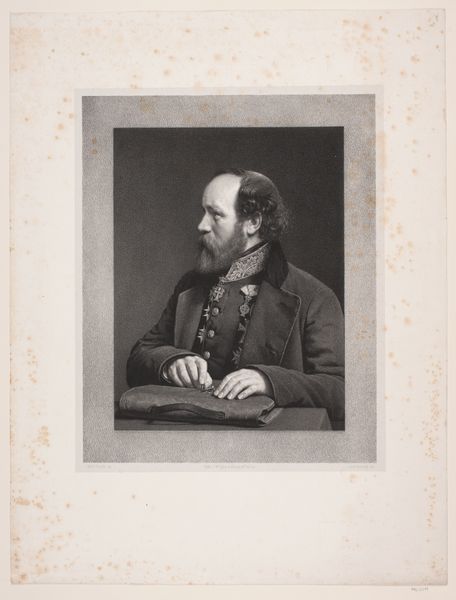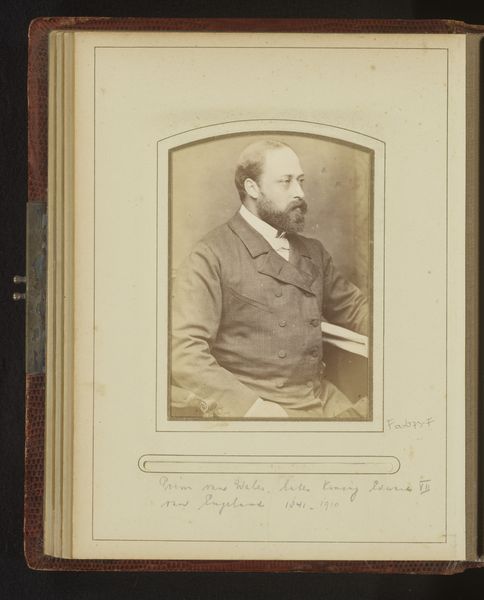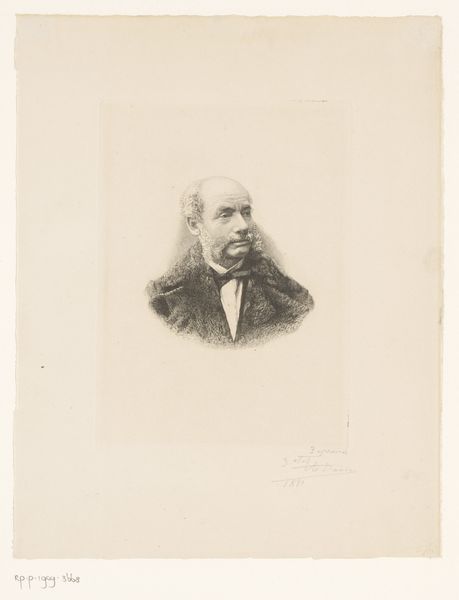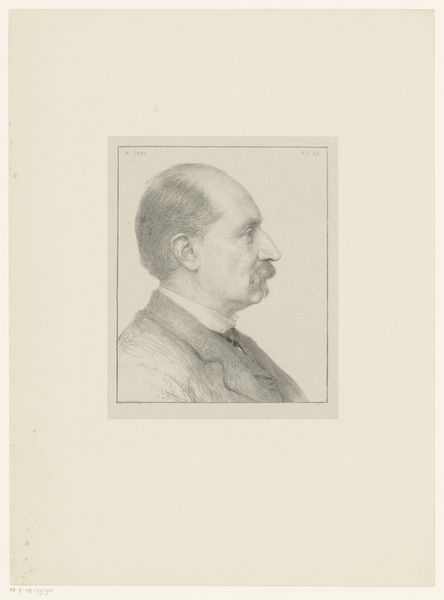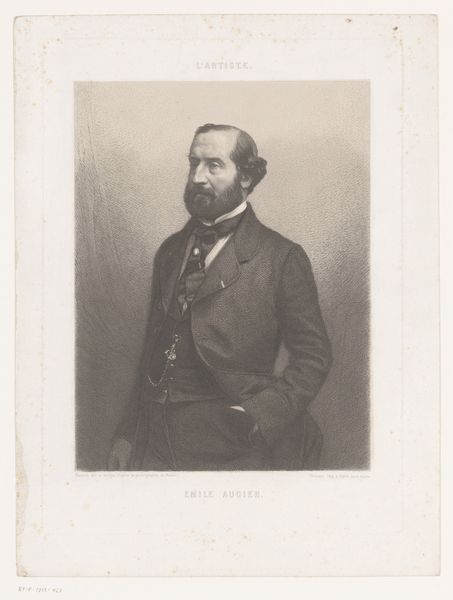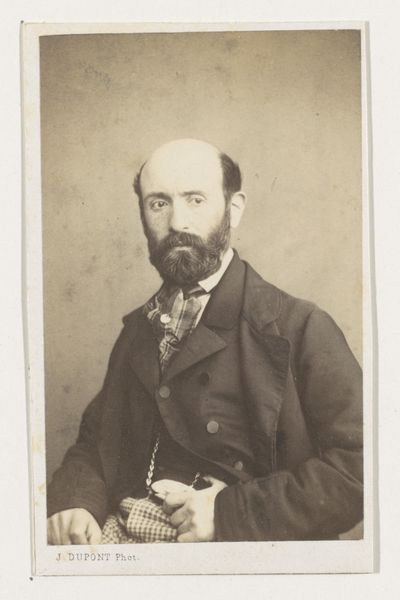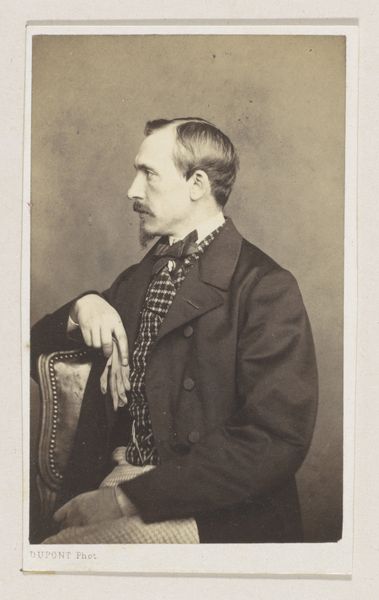
paper, photography
#
portrait
#
paper
#
photography
Dimensions: 19.7 × 14.9 (image, oval); 34 × 26 cm (mount)
Copyright: Public Domain
Curator: Let's discuss this captivating portrait of Hector Malot, captured circa 1876 by Etienne Carjat. It's a photographic print mounted on paper, currently residing here at the Art Institute of Chicago. Editor: My first impression is one of somber dignity. The oval frame emphasizes the sitter's controlled pose and the soft tonal gradations lend a rather subdued and serious mood. Curator: Indeed. The context surrounding Malot is essential here. A celebrated author of children's literature and social novels, he was deeply engaged with representing marginalized figures in 19th-century French society. Carjat's portrait participates in that legacy, framing Malot as a figure of literary authority and perhaps, moral gravitas. Editor: I appreciate your point. Yet, the very composition draws my eye to the play of light across Malot's face, highlighting the beard’s texture, for example. Note the contrast between the smooth background and the textures of his coat. The almost severe symmetry suggests a composed interiority that moves beyond social categorization. Curator: But that interiority is not separate from his social positioning. The beard, the tailored suit - these were potent symbols of bourgeois identity, hinting at the values he championed in his novels, ideals of republicanism and progress but from a position of power. Editor: Still, the artist has chosen a three-quarter view, softening what would otherwise be an assertion of power. We are given insight, but not direct confrontation, through the lens. The balance of tone creates a harmony that makes this portrait more contemplative. Curator: Perhaps. Considering the historical moment and Carjat’s own sympathies, the portrait subtly challenges prevailing representations, even in its quietness. It seems intended to humanize this very public figure in ways not dissimilar from the intentions of Malot's own writing. Editor: Perhaps there's an intersection. Whether it's achieved through contextual interpretation or careful attention to visual form, both provide invaluable clues for discovering the meaning within the art.
Comments
No comments
Be the first to comment and join the conversation on the ultimate creative platform.
